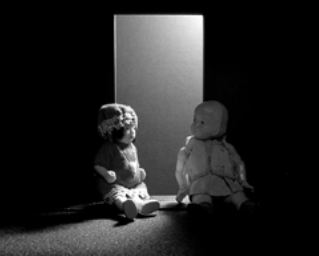Stories > Taking Up Residence
Taking Up Residence
The Singapore Art Museum’s new Residencies programme will connect both local and international artists with each other and the wider community for better cross-cultural appreciation.
BY SHWETA PARIDA
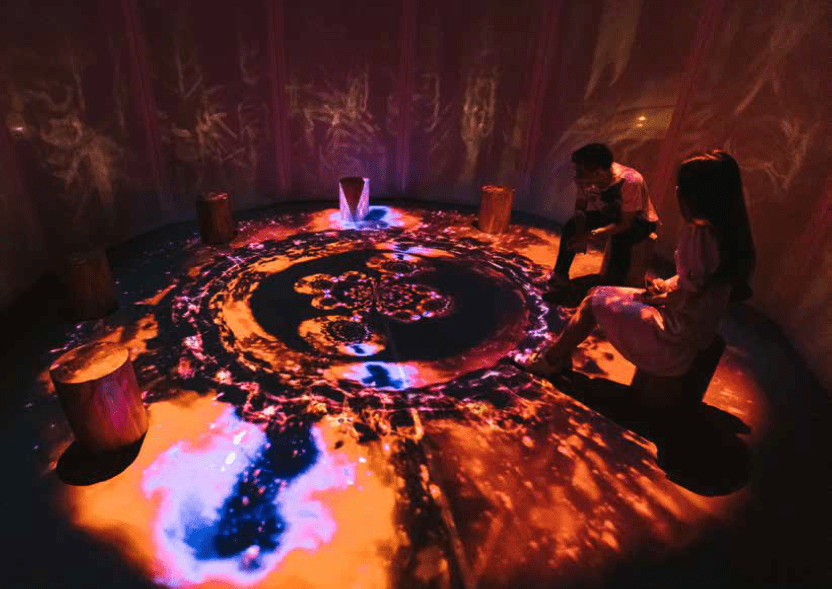
Escape Velocity by British artist Zai Tang is a sound installation based on the theme of ecological crisis.
rt can connect people from different communities and backgrounds, present multiple perspectives, and encourage mutual understanding. It is about creating a space where people can come together to contemplate contemporary issues that our society is facing today,” says Dr Eugene Tan, director of the Singapore Art Museum (SAM). And it is how he envisions the institution’s role, when it recently launched its first Residencies programme since the museum opened its doors 25 years ago.
The move reflects the evolving role of arts. “Our aim is to support the development of innovative artistic and curatorial practices that respond to current global discourses, and serve as an incubator for new approaches to artistic and curatorial modes by facilitating sustained exchanges on contemporary art,” he shares.
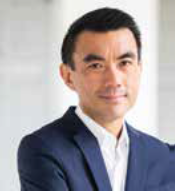
“ART CAN CONNECT PEOPLE FROM DIFFERENT COMMUNITIES AND BACKGROUNDS, PRESENT MULTIPLE PERSPECTIVES, AND ENCOURAGE MUTUAL UNDERSTANDING,” SAYS DR EUGENE TAN, DIRECTOR, SINGAPORE ART MUSEUM.
As a result, SAM Residencies hopes to provide the impetus to critically examine what a contemporary art institution means to Singapore and its ability to create a favourable environment to engage more meaningfully with the community.
In the past few years, there has already been a concerted effort to bring the public museums closer to people by providing free entry to the local population for most permanent exhibitions.
“As the SAM seeks to engage in more active dialogue and collaboration with artists and our audiences, the residencies serve as a natural extension of our work as a museum,” notes Dr Tan. “Such residencies also allow artists to network and exchange ideas with other art practitioners from different cultures and backgrounds, opening up new possibilities for art-making.”
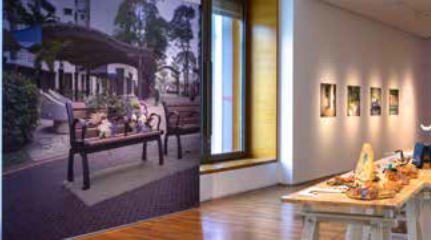
Interventions (left), the work of Singaporean artist Diana Rahim, explores the notion of hostile architecture in the Lion City, while #sgbyecentennial 2019 by Fazleen Karlan draws on excavation.
CULTURAL COGNISANCE
Having opened in 1996 as Singapore’s first dedicated visual arts museum, SAM evolved from the National Museum Art Gallery, which was established in 1976. Over the past 25 years, it has established itself as a point of reference in the art world, thanks to its repository of one of the most significant public collections of modern and contemporary Southeast Asian art in the world. This collection is now shared between SAM and the National Gallery Singapore, which opened in 2015.
This pursuit for continuous evolution will see SAM offer residencies to both local and international artists, a time-honoured practice among all art institutions of international standing. A touchstone of this programme is to encourage the residents to interact with or involve local communities and the public in different ways through programmes and presentations.
“The new Residencies spaces will be open for social interaction, not just among the art community but also with the larger creative sector and other communities in Singapore, serving as a catalyst for collaborative activities to develop,” he elaborates.
A UNION OF CREATIVE MINDS
Describing how SAM has been bringing about intercultural exchange through its programmes, Dr Tan cites examples of recent museum exhibitions such as They Do Not Understand Each Other, a joint presentation with Tai Kwun Contemporary and National Museum of Art Osaka. Its centered on facilitating cultural understanding. Another recently concluded presentation – Escape Velocity V by British-born and Singaporebased artist Zai Tang – examined ecological issues such as the impact of hyper-development on wildlife in Singapore.
As the organiser of the Singapore Biennale, a platform for international dialogue in contemporary art, SAM also brings together artistic perspectives from different geographies and cultures. This allows both artists and audiences to discover artistic practices from Singapore and the region, while engaging in meaningful discussions about contemporary art in a global context.
One such example is Cambodian artist Lim Sokchanlina, who had collaborated with SAM during the Singapore Biennale 2019. Lim says he particularly enjoyed working with SAM curator – Andrea Fam – and that the professionalism and high quality of production really stood out for him. “In addition, my works were shown next to some Singaporean artists whom I knew previously but never had a chance to properly interact with. During the biennale, we got the opportunity to lunch, hang out and talk about topics of mutual interest,” he shares, adding that he admires the work of local artists such as Lee Wen, Sim Chi Yin and Charles Lim.
Caretaker, Donna Ong’s work, references the diplomatic relations between Japan and the US.
“I HAVE LEARNT THAT WE MUST ALWAYS BE RESPECTFUL TOWARDS OTHERS CULTURES, AND LISTENING MAY BE THE MOST IMPORTANT BASIS FOR CULTURAL EXCHANGE,” SAYS SINGAPOREAN ARTIST CHOY KA FAI.
Conversely, Singaporean contemporary artists such as Ho Tzu Nyen, Choy Ka Fai, Donna Ong and Ang Song-Ming have also had the opportunity to participate in overseas residencies. With the support of the SAM, Choy has been able to work with a wide spectrum of curators and showcase his work to a larger international audience. Indeed, he credits working abroad and collaborating with international artists for influencing his creative process and helping him realise his own true potential.
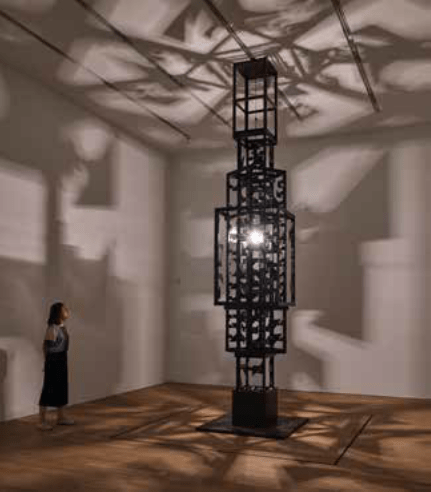
Not Quite a Total Eclipse by Thai artist Wit Kanchanapong is part of the They Do Not Understand Each Other exhibition.
“I have learnt that we must always be respectful towards other cultures, and listening may be the most important basis for cultural exchange,” he shares.
One of Choy’s recent projects – CosmicWander: Expedition – presented by SAM was based on the various shamanic dance rituals in Asia. Contrary to the general association of shamans with superstitions of the past, Choy says he was intrigued by their innovation and ability to adapt with the changing times. “For example, the Taiwanese spirit mediums are embracing the freedom of digital democracy, expanding their connectivity into the digital realm with live streaming rituals, e-commerce and virtual healing sessions. They continue to adapt and press their relevancy as social counsellors in certain cultures,” he notes.
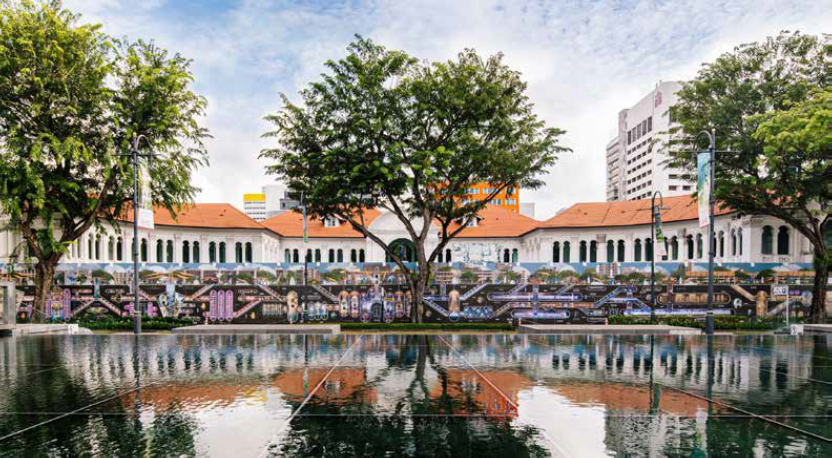
British artist Finbarr Fallon reimagines the Bras Basah- Bugis precinct.
THE RESIDENCY PRINCIPLES
So what qualities will the selected local and international artists need to embody for the SAM Residencies? “As each residency cycle will carry a set of broad themes that reflects contemporary issues, the selection criteria will take the applicants’ responsivity to the theme into consideration. It also encourages applications from individuals as well as collectives to explore innovative and experimental modes of research and production,” elucidates Dr Tan.
The museum, which is currently undergoing redevelopment and is expected to reopen in 2023, is not only aiming for a physical overhaul but also in the way it rewires its connections with the artists as well as the community. “In terms of curatorial practice, this means engaging in a sustained process of research and co-creation with the artists we collaborate with,” says Dr Tan. “We can see an example of this in our recent exhibition Wikicliki: Collecting Habits on an Earth Filled with Smartphones, which examines whether the museum can endeavour to collect an artwork that expands and grows with time. It takes its cue from the newer modes of creating and presenting art, and gleans fresh strategies for the collection of contemporary art.”
The other facet of collaborating with the community is based upon the fact that museums are generators of social change – as sites where meanings are co-produced and continually re-negotiated through collaborative uses of art.
“It is part of the SAM’s mission to imagine and inspire a better future, reflecting on the problems that we face collectively, where art helps to transform and move our society in the right direction,” says Dr Tan.
“We are taking steps towards creating a space for productive civic discourse, broadened perspectives that will hopefully encourage a better understanding and appreciation of contemporary art among our audiences, and in doing so inspire more public support of the arts in Singapore.”

